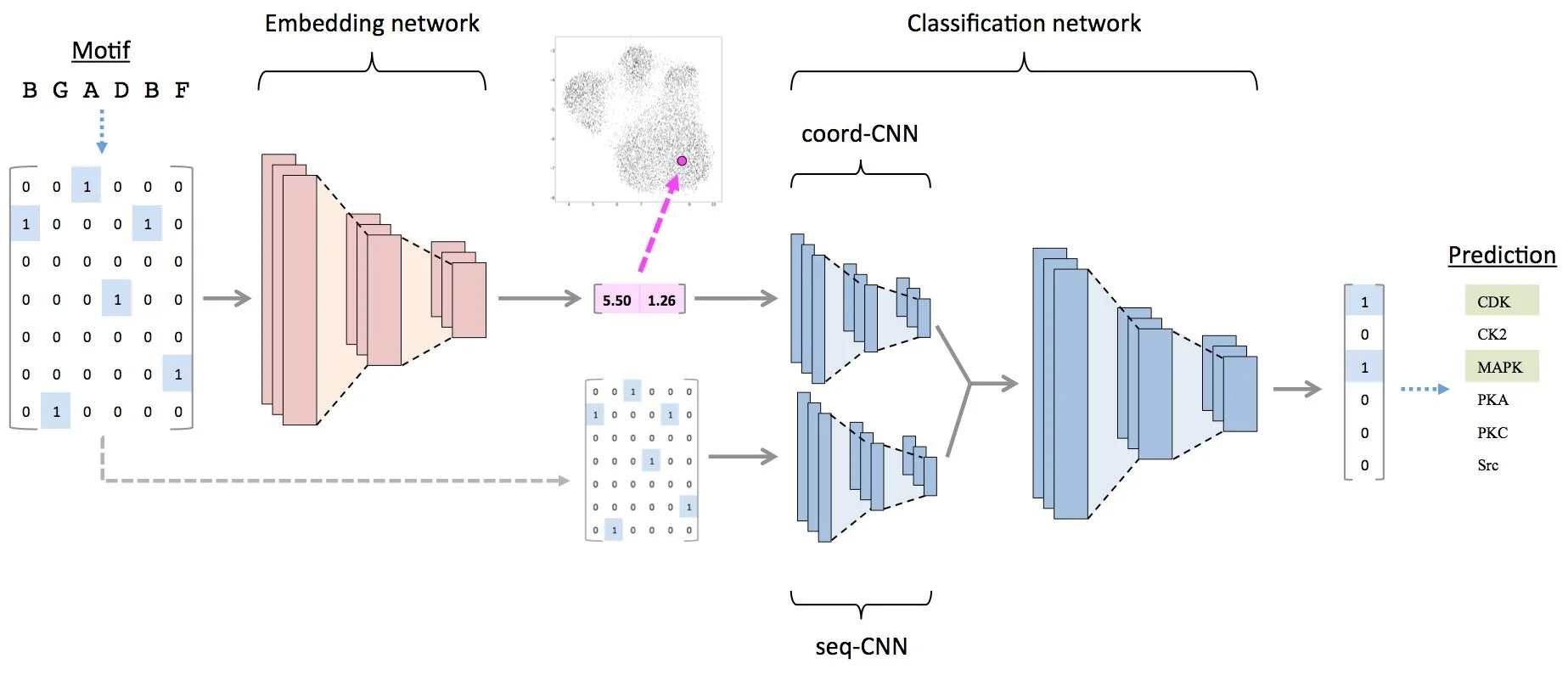research
We have a broad range of research interests, spanning multiple domains as well as both computational and experimental techniques. Below are some current active areas of research.
Defining the Hierarchy of Kinome Architecture and Function
The kinome touches nearly all aspects of cellular signaling and coordinates the behavior of numerous functional processes such as progression through the cell cycle, cellular motility, apoptosis, and differentiation. Such a central role in cellular function similarly implicates kinome dysfunction as a contributor, and even driver of many diseases, with well-established examples in cancer, infectious disease, inflammation, and autoimmunity. We have a long-standing interest in characterizing the architecture of the kinome as well as working to understand its response to targeted drug perturbations. With particular emphasis on poorly-studied "dark kinases," this work includes both computational and experimental efforts to quantify kinome behavior and identify novel druggable targets.
Towards the Rational Design of Combination Therapies
Related to our work on understanding kinome architecture and function, we have actively involved in the development of novel methodologies for the rational design of combination therapies, especially in the field of oncology. Most of this work is focused on better understanding the effect of cancer-specific alterations to the kinome and how small molecule perturbations of the kinome can potentially establish normal function. This effort incorporates both novel experimental approaches as well as the creation of new computational methodologies to quantify perturbations and predict downstream cellular responses.
The Host-Pathogen Interface
Despite significant progress over the last century, infectious disease still has a significant impact on human health, as well as plants and animals of agricultural and economic importance. While pathogen invasion and survival requires that the pathogen interact with and manipulate the host's cellular machinery, how this manipulation occurs is poorly understood even in well-studied disease systems. We are interested in understanding the underlying principles of how pathogens interact or “plug-in” at the molecular level with their host’s cellular machinery, allowing it to rewire specific cellular pathways to establish favorable conditions for its survival. Longer-term, we hope to identify druggable targets that disrupt this host-pathogen interface.










